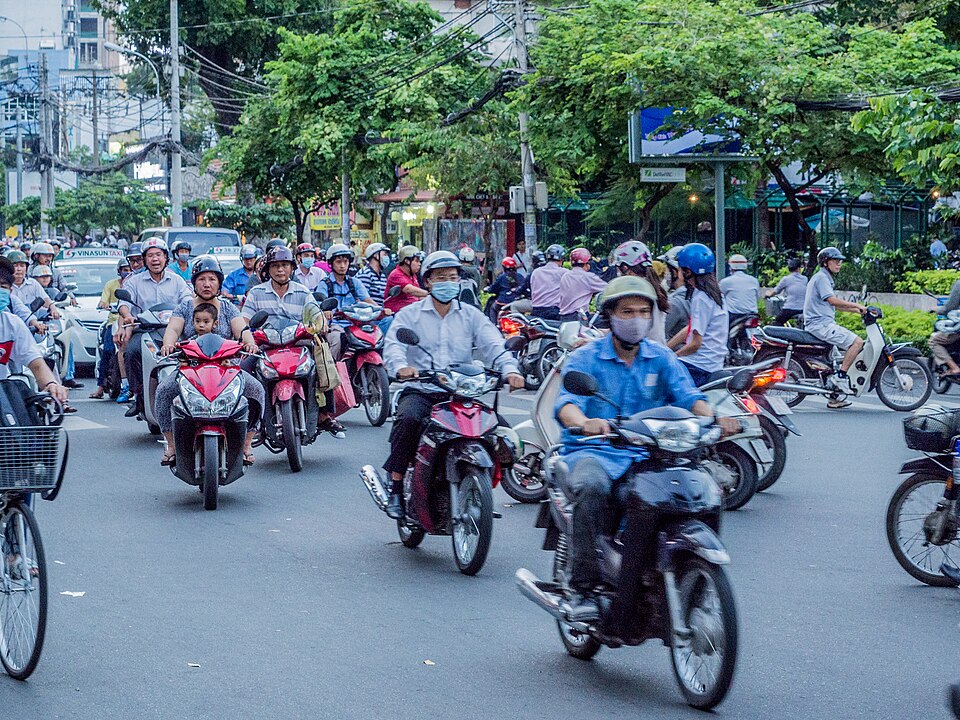
Stricter emission deadlines set for vehicles made in Hanoi and Ho Chi Minh City. (Photo: Wikepedia Commons)
Vietnam is preparing sweeping new measures to curb urban air pollution. From 2027, all cars produced in Hanoi and Ho Chi Minh City must meet level 4 emission standards, while Hanoi plans to roll out low-emission zones starting in 2026 that will restrict or charge high-polluting motorcycles.
Hanoi to restrict high-emission motorcycles with low-emission zones
Following Prime Minister Pham Minh Chinh’s call for urgent action on environmental pollution, Hanoi is accelerating plans to establish low-emission zones (LEZs), five years earlier than initially scheduled.
The first phase will begin in July 2026, covering the downtown area within the first ring road. By 2028, restrictions will extend to the second ring road, and by 2030 to the third.
Under the draft plan, from 2031 onward, LEZs must be designated in one of three cases:
- Densely populated inner-city areas
- Traffic congestion hotspots
- Zones with poor air quality
Diesel trucks, fossil fuel-powered motorbikes, and light motorcycles will be banned from these zones. Vehicles failing to meet Euro-4 standards will face curfews or speed limits. Additional charges will also be levied on high-emission vehicles to further discourage entry.
.jpg)
Hanoi plans to establish low-emission zones starting in 2026 to tackle air pollution. (Photo: Brent Ho/Flickr)
Stricter emission standards for vehicles produced in Hanoi, Ho Chi Minh City
The central government is also tightening controls on the production side. According to the Ministry of Agriculture and Environment, from 2027, all cars manufactured in Hanoi and Ho Chi Minh City must comply with Euro-4 equivalent standards, covering vehicles produced from 2017 onward.
The framework defines five levels of standards for CO₂ emissions from internal combustion engines:
- Level 1: 4.5% cap
- Level 2: 3.5% cap
- Level 3: 3% cap
- Level 4: 0.5% cap
- Level 5: 0.3% cap
The rules will be phased in depending on production year and location. For example, cars produced from 2017 must meet Level 3 standards by the end of 2026, and if manufactured in Hanoi or Ho Chi Minh City, they must reach Level 4 by 2027.
Nationwide, cars made after 2022 must comply with Level 4 by 2026 and Level 5 by 2030, while vehicles from Hanoi and Ho Chi Minh City face a two-year earlier deadline.
Deputy Minister Le Cong Thanh emphasized that stricter measures will apply to areas suffering the worst air pollution, with Hanoi and Ho Chi Minh City as top priorities.
Rapid vehicle growth has been cited as a key driver of deteriorating air quality in Hanoi. The city recorded multiple times of “very poor” pollution levels in late 2024 and January 2025, posing serious health risks.
Source: Vietnam+(1), (2)
.jpg)

